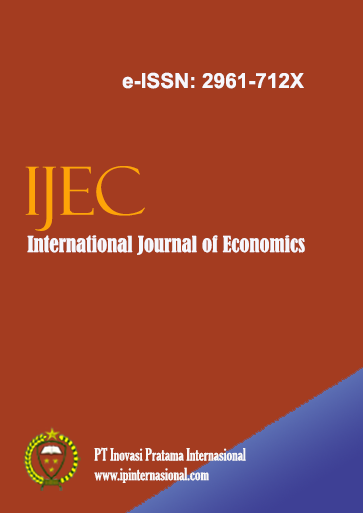Bibliometric Analysis: The Development of Research and Publications on Sustainable Development Goals (SDGs) and Their Impact on Investment
Main Article Content
Abstract
Purpose: This study aims to analyse literature related to Sustainable Development Goals (SDGs) and their impact on investment using bibliometric analysis. Design/Methodology/Approach: The study utilises 41 articles related to SDGs and investment collected from the Scopus database. The bibliometric analysis includes keyword analysis, trend analysis, and density visualisation. Findings: The research results indicate four main topic clusters: 1) carbon dioxide, climate change, economic development, etc.; 2) foreign direct investment, governance, private sector, etc.; 3) economic and social effects, emerging economies, environmental quality, etc.; 4) alternative energy, environmental economics, spatiotemporal analysis. The topics of "Sustainable Development Goal" and "investment" are the main focus in the literature. Practical Implications: Bibliometric analysis can help researchers understand the development of trends and main topics in the field of research related to SDGs and investment. These findings can be used to develop more coordinated and directed research programs in the future.
Downloads
Article Details

This work is licensed under a Creative Commons Attribution 4.0 International License.
References
Aria, M., & Cuccurullo, C. (2017). bibliometrix: An R-tool for comprehensive science mapping analysis. Journal of Informetrics, 11(4), 959-975.
Filho, W. L., Brandli, L. L., Salvia, A. L., Rayman-Bacchus, L., & Platje, J. (2020). COVID-19 and the UN Sustainable Development Goals: threat to solidarity or an opportunity?. Sustainability, 12(13), 5343.
Garousi, V., Felderer, M., & Mäntylä, M. V. (2019). Guidelines for including grey literature and conducting multivocal literature reviews in software engineering. Information and Software Technology, 106, 101-121. doi:10.1016/j.infsof.2018.09.006
Hammarfelt, B. (2016). Beyond coverage: Toward a bibliometrics for the humanities. Research Evaluation, 25(3), 231-243. doi:10.1093/reseval/rvv049
Leal Filho, W., Brandli, L. L., Lange Salvia, A., Rayman-Bacchus, L., & Platje, J. (2021). COVID-19 and the UN Sustainable Development Goals: Threat to Solidarity or an Opportunity?. Sustainability, 13(3), 1255.
Liao, H., Tang, M., Luo, L., Li, C., Chiclana, F., & Zeng, X. J. (2018). A bibliometric analysis and visualization of medical big data research. Sustainability, 10(1), 166. doi:10.3390/su10010166
Machado, C. G., de Lima, E. P., da Costa, S. E. G., Angelis, J. J., & Mattioda, R. A. (2017). Framing maturity based on sustainable operations management principles. International Journal of Production Economics, 190, 3-21.
Merigó, J. M., Cancino, C. A., Coronado, F., & Urbano, D. (2016). Academic research in innovation: a country analysis. Scientometrics, 108(2), 559-593. doi:10.1007/s11192-016-1984-4
UNCTAD. (2014). World Investment Report 2014: Investing in the SDGs: An Action Plan.
United Nations. (2015). Transforming our world: The 2030 agenda for sustainable development.
Van Eck, N. J., & Waltman, L. (2014). Visualizing bibliometric networks. In Y. Ding, R. Rousseau, & D. Wolfram (Eds.), Measuring scholarly impact (pp. 285-320). Springer, Cham. doi:10.1007/978-3-319-10377-8_13
Wiśniewska, A., & Kowalska, M. (2020). Bibliometric analysis as a tool for tracking research trends in the field of sustainable development. Sustainability, 12(4), 1457. doi:10.3390/su12041457

